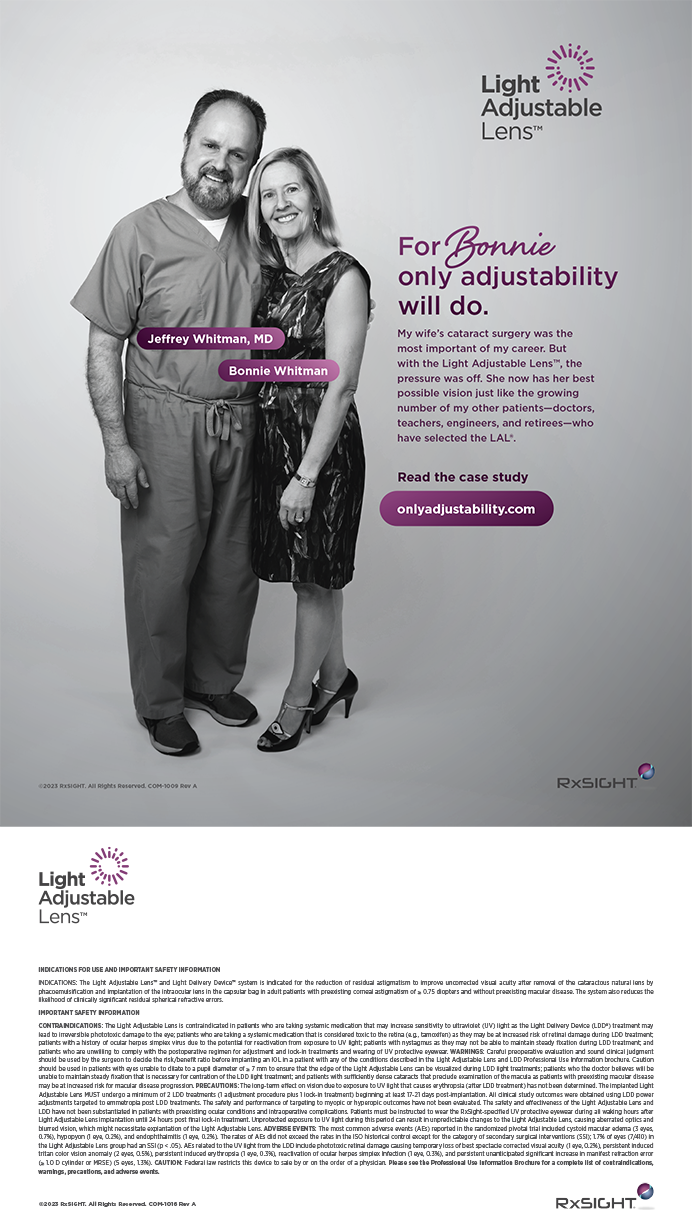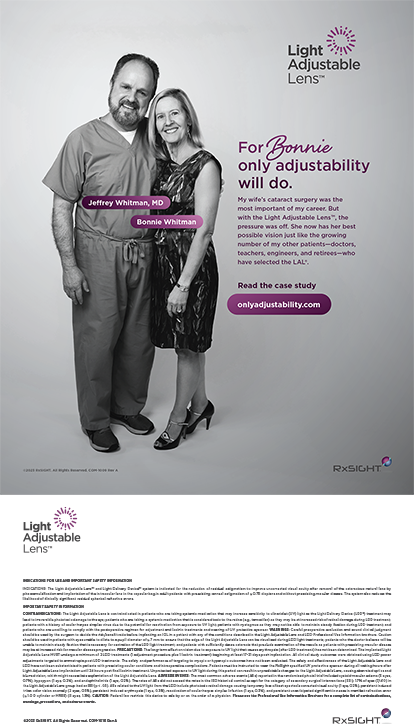When children begin to experience vision loss, they are fitted for their first pair of glasses. Teenagers often opt for contact lenses, and young adults elect a refractive procedure. Middle-aged adults soon develop a need for reading glasses, and later in life many require cataract surgery. Fortunately, the needs addressed by the last three treatments can be covered by a single procedure that provides lasting refractive stability—refractive lens exchange.
NATURAL LIMITATIONS, EVOLVING TECHNOLOGY
While a young person's cornea has a positive spherical aberration that remains constant with age, his lens has a negative spherical aberration. The two compensate for one another, and no aberrations are present. With age, the negative spherical aberration of the lens gradually lessens, until finally it becomes positive spherical aberration. These changes ultimately result in a loss of contrast sensitivity as well as glare disability, which are problems often experienced in night driving. The results of any refractive procedure upon the cornea will be affected by the constant alteration of the lens.
Unfortunately, we cannot treat presbyopia in the cornea. Using a laser to create a high-powered central 2 mm on the cornea may provide a temporary solution, but the cornea will ultimately reshape and reverse the procedure's effectiveness. I am also skeptical about the evidence of the benefits of scleral expansion incisions; many reports contain only subjective confirmations of effectiveness. Refractive lens exchange, however, allows the surgeon to address all of the components of the patient's refractive error, including presbyopia. Another benefit is that the patient will never develop cataracts, which is a huge advantage in light of the high morbidity associated with cataracts in their early presurgical stage.
Improvements in phacoemulsification technologies, axial length measurement technologies such as the IOLMaster (Zeiss Humphrey Systems, Dublin, CA), and lens power calculation software, as well as new antibiotics make lens extraction and IOL implantation extraordinarily safe, efficacious, and accurate. Surgeons will be able to select from a growing variety of lens types and designs, including multifocal and accommodative lenses, flexible injectable polymer materials, and light-adjustable IOLs that can incorporate wavefront technology to correct for aberrations. Pharmacia Corporation (Peapack, NJ) is developing a polymer that surgeons can inject through a 1-mm capsulorhexis to refill the capsular bag, and there are a number of other companies with similar technologies on the horizon. Light-adjustable lens technology, meanwhile, will allow the surgeon to use an ultraviolet laser to alter the lens' power after implantation. Not only are cataract and IOL technologies familiar and comfortable to all anterior segment surgeons, they are significantly less costly than laser equipment and maintenance.
EVERYBODY WINS
Patients, ophthalmologists, and even the US government will benefit from refractive lens exchange. Patients will enjoy a predictable refractive procedure and rapid recovery, all without the worry of developing cataracts later in life. Surgeons can offer these procedures without the intrusion of private or government insurance agencies, and consequently develop a less disruptive relationship with their patients. Finally, government providers will benefit from a reduction in the financial burden of covering cataract surgery expenses as more and more Baby Boomers opt for lens exchange to address their refractive surgery goals.


